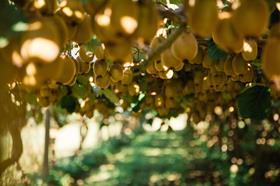
Plant & Food Research scientists and collaborators from the US have created ‘digital twins’ of pollination processes in kiwifruit orchards to help growers can optimise their fruit set.
Digital twins are virtual replicas of physical systems – in this case mathematical models of the biology of the plants and the behaviour of pollinating bees.
This digital twin, created with more than 30 years of field-based data, give researchers the ability to examine complex scenarios which examine multiple, intertwined factors at once.
These types of trials are difficult or impossible to test in field – running a full combination of even six variables would require more kiwifruit orchards than exist in New Zealand.
Using this digital twin, the researchers predict that optimal fruit set is achieved with 60-75 per cent female flowers in the orchard and that most pollination benefit is gained from the first six to eight honey bees per 1,000 flowers, with diminishing returns thereafter.
The research suggests that fruiting success is more sensitive to variation in plant traits and the female-to-male flower ratio than bee density, provided this minimum density is achieved.
David Pattemore, pollination scientist of Plant & Food Research and leader of the research team said the digital twin allowed simultaneously test plant-based factors and pollinator-based factors for the first time.
“It now provides us with a platform to test many more questions and develop recommendations for growers that can be confirmed in field trials,” Pattemore said.
'The prediction should give kiwifruit growers confidence that what they have been practicing is more or less on the right track. The model provides strategies for improving crop management.”
Although initially designed to investigate honey bees pollinating kiwifruit vines, the models can be adapted to suit a wide range of crop species and pollinators.
The team is currently working to scale up the model to investigate more complex questions such as the influence of diverse pollinator species and the effect of the spatial layout of orchards.
Enjoyed this free article from Produce Plus and its team of editors? Don’t miss out on even more in-depth analysis, plus all the latest news from the fresh produce business.Subscribe now to Produce Plus Magazine



